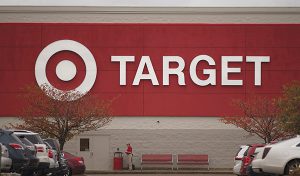Bloomberg
Target Corp cut its profit outlook for the second time in three weeks as it rushes to ease an inventory surge by marking down items and cancelling orders.
Soaring merchandise stockpiles and “unusually high transportation and fuel costs†prompted Target to cut its outlook for operating profit to about 2% of sales this quarter. The company had projected the gauge would be in a wide range around 5.3%.
The rapidly worsening outlook underscores Target’s struggle to adjust to unexpected shifts in demand amid stubborn inflation that’s forced consumer spending into less-profitable
staple goods and away from discretionary categories such as electronics and home products. That’s left retail companies with a whole lot of merchandise that shoppers don’t want.
“This may prompt some other retailers to proactively talk about their own inventory positions before we get to next quarter,†Bloomberg Intelligence analyst Jen Bartashus said in a phone interview after Target’s profit cut.
Shares of Target fell 2.8%, paring an earlier drop of as much as 7.8%. The slump dragged down shares of its rivals, including Walmart Target had already fallen 31% so far this year, including its biggest skid since 1987 after the release of its first-quarter results, which featured a profit forecast cut and a big jump in inventories. That came at the heels of a huge run-up in the stock price during the first two years of the pandemic and years of sales growth.
In the past, bloated retail inventories have been harbingers of economic slowdowns or recessions as consumers pull back spending, but Bartashus said the read-through from Target is murkier because the company maintained its sales guidance for the year. “There’s a little more nuance than what we may have seen historically,†she said.
Across the US, some excess of the inventory was accumulated intentionally to hedge against another potential wave of supply-chain disruptions that made some items tough to find over the past couple of years. Now, however, retailers have to account for consumers’ sudden price sensitivity while balancing their own surging operating costs from fuel, labour and other expenses.
Target said it sees operating margin rising to about 6% in the second half of the year.
 The Gulf Time Newspaper One of the finest business newspapers in the UAE brought to you by our professional writers and editors.
The Gulf Time Newspaper One of the finest business newspapers in the UAE brought to you by our professional writers and editors.
